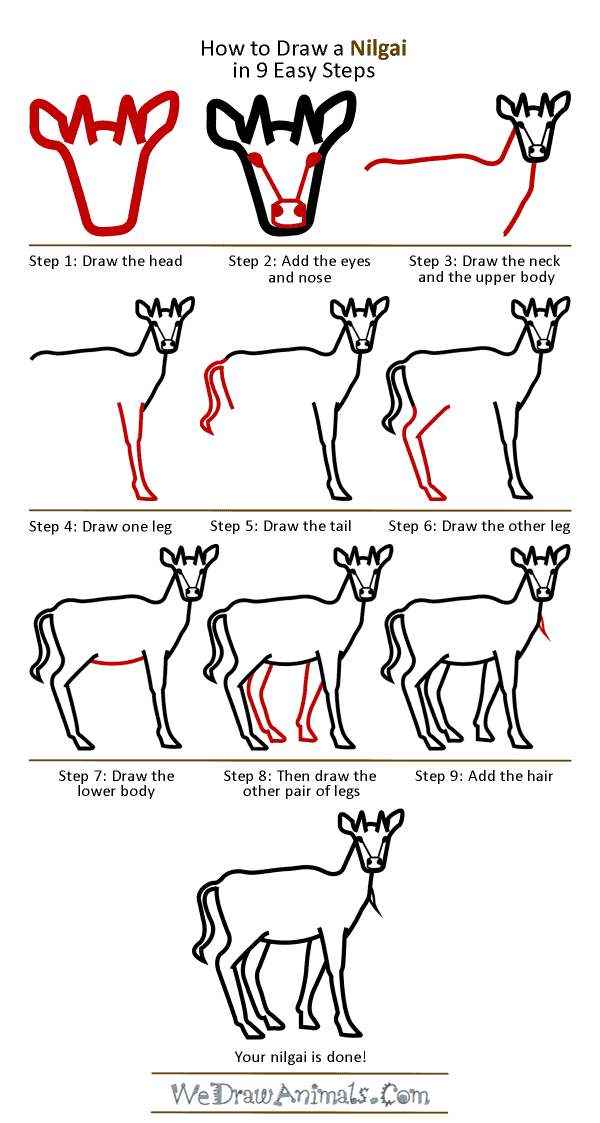In this quick tutorial you'll learn how to draw a Nilgai in 9 easy steps - great for kids and novice artists.
The images above represent how your finished drawing is going to look and the steps involved.
Below are the individual steps - you can click on each one for a High Resolution printable PDF version.
At the bottom you can read some interesting facts about the Nilgai.
Make sure you also check out any of the hundreds of drawing tutorials grouped by category.
How to Draw a Nilgai - Step-by-Step Tutorial
Step 1: Make the head by drawing a trapezoid with a wide top and narrow bottom. Draw two triangles on top for the horns, and add a diamond shape on both of the top corners for the ears.
Step 2: Draw a small square, with two dots in the top corners, on the lower part of the head for the nose. Draw two circles in the upper part of the head for the eyes; draw a line from each eye to the nose.
Step 3: Draw a line straight down from the chin, and another from behind the ears, that bend to the side to make the neck.
Step 4: For the first front leg, draw two straight lines down from the front of the body, that end in a triangle.
Step 5: At the end of the body, draw a line curving down for the rear. Add a curvy line for the tail.
Step 6: For the hind leg, draw two lines pointing to the end of the body, then connect them to two more lines that angle to the front of the body, ending in a triangle.
Step 7: Draw a curve connecting the front and back legs.
Step 8: Repeat steps 5 and 6 for the second pair of legs.
Step 9: Draw a small triangle at the bottom of the neck.
Interesting Facts about the Nilgai
The nilgai is the largest out of all of the Asian antelope and is one of the most commonly found animals in India. The most common places that you will find these animals are in farmlands or scrub forests. The nilgai often will grow to be around 1.1 to 1.5m in height to the shoulder and 1.7 to 2.1m in total height to the top of the head. The nilgai frequently weighs around 109 to 288kg.
Did you know?
- People aren’t actually sure of the origin of the Asian antelopes name, as the literal translation of nilgai is “blue cow” which is possibly because of the slate blue color that can be found on the animal or possibly a showing of the importance of the animal
- These amazing animals are able to run at speeds of 48kmph while they are being chased
- It is very uncommon to hear these antelopes making any noise but scientists have been able to catch some recording of these animals roaring
- The male nilgai are known to often fight and compete with each other by showing off a threatening posture display, neck wrestling and sometimes even leading to both of the males lunging at each other using their horns










